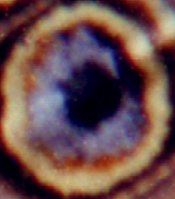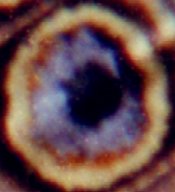I'll try to help.
First, it is 120 film, not 120mm film. 120mm film would be really big!
Don't worry, lots of people make that mistake.
Second, you need to separate in your mind the Pixel Per Inch (PPI) numbers for a screen or a scanner and the essentially unrelated Dots Per Inch (DPI) numbers for a printer.
Third, you need to understand what works with and looks good when you are printing if you are using a printer that lays down dots (of ink).
For moderate size prints, a number of 300 - 400 DPI will give good results. Many printers are limited to 300 DPI, so that may be a good target resolution.
For larger prints, one doesn't stand as close when viewing, so 250 DPI is often a good choice.
Now here comes the challenging part - how do you go from a source with a Pixel Per Inch (PPI) resolution, to a printing file with a Dots Per Inch (DPI) resolution?
This is a very broad simplification, but if you equate one pixel to one dot, and are working in black and white, it is fairly workable.
For an 8" x 8" print made on a 300 DPI printer, you end up with a print that is 2400 x 2400 dots. If you use one pixel for each dot, you need 2400 x 2400 pixels.
You said in another thread that you wanted to make big, 30" x 30" prints - those are challenging.
Using the same analysis as with the 8" x 8" print, a printing resolution of 300 DPI requires 9000 x 9000 pixels - a big file. Even with a 3000 ppi scanner, you still need a 3" x 3" negative.
Even if you use a printing resolution of 250 DPI it still requires 7500 x 7500 pixels - still a big file.
If you are working in colour, where each image element is made out of multiple pixels, the numbers go higher.
This is why software is necessary - to add pixels by way of interpolation.
It is much simpler in the darkroom



.




 .
.







